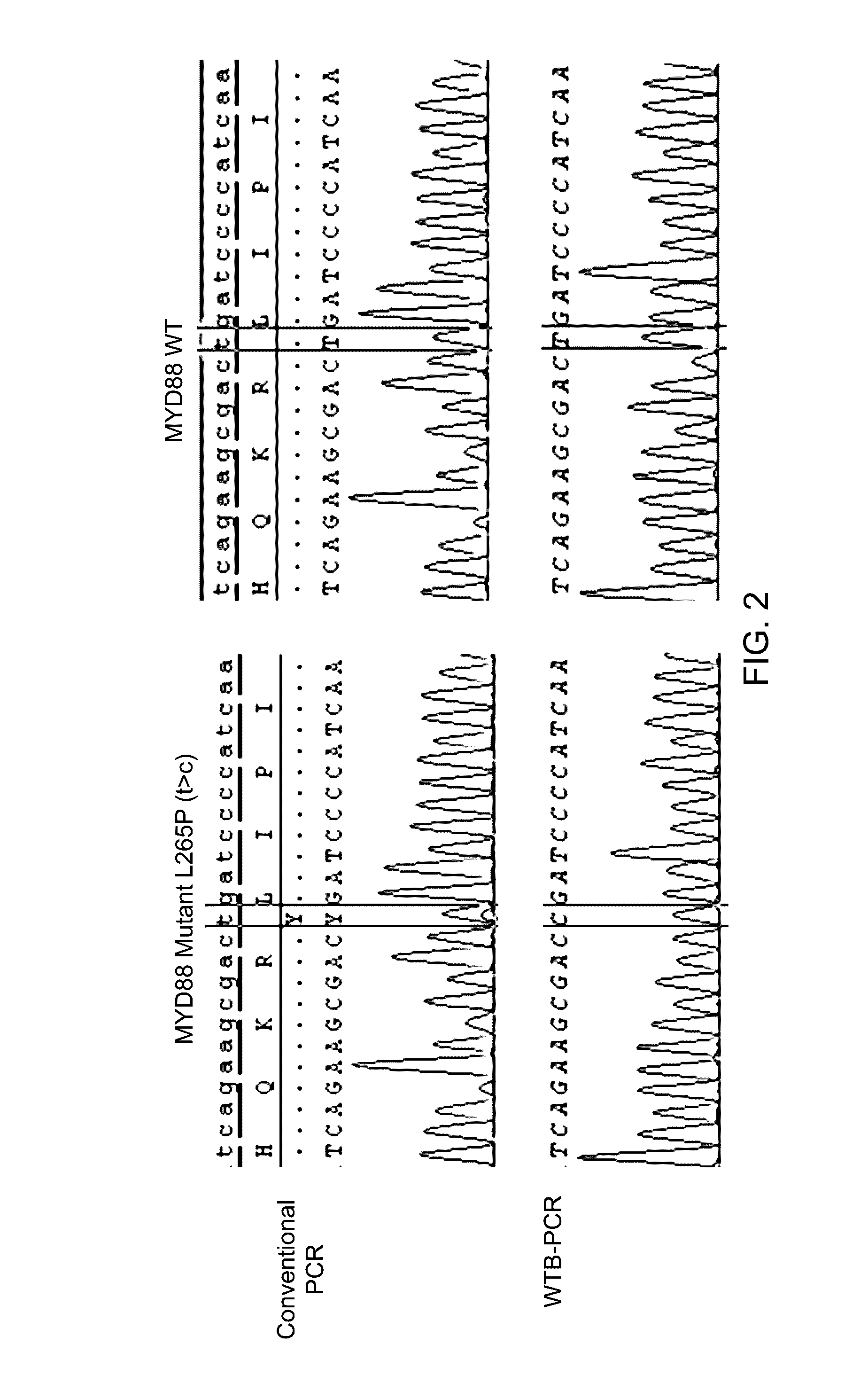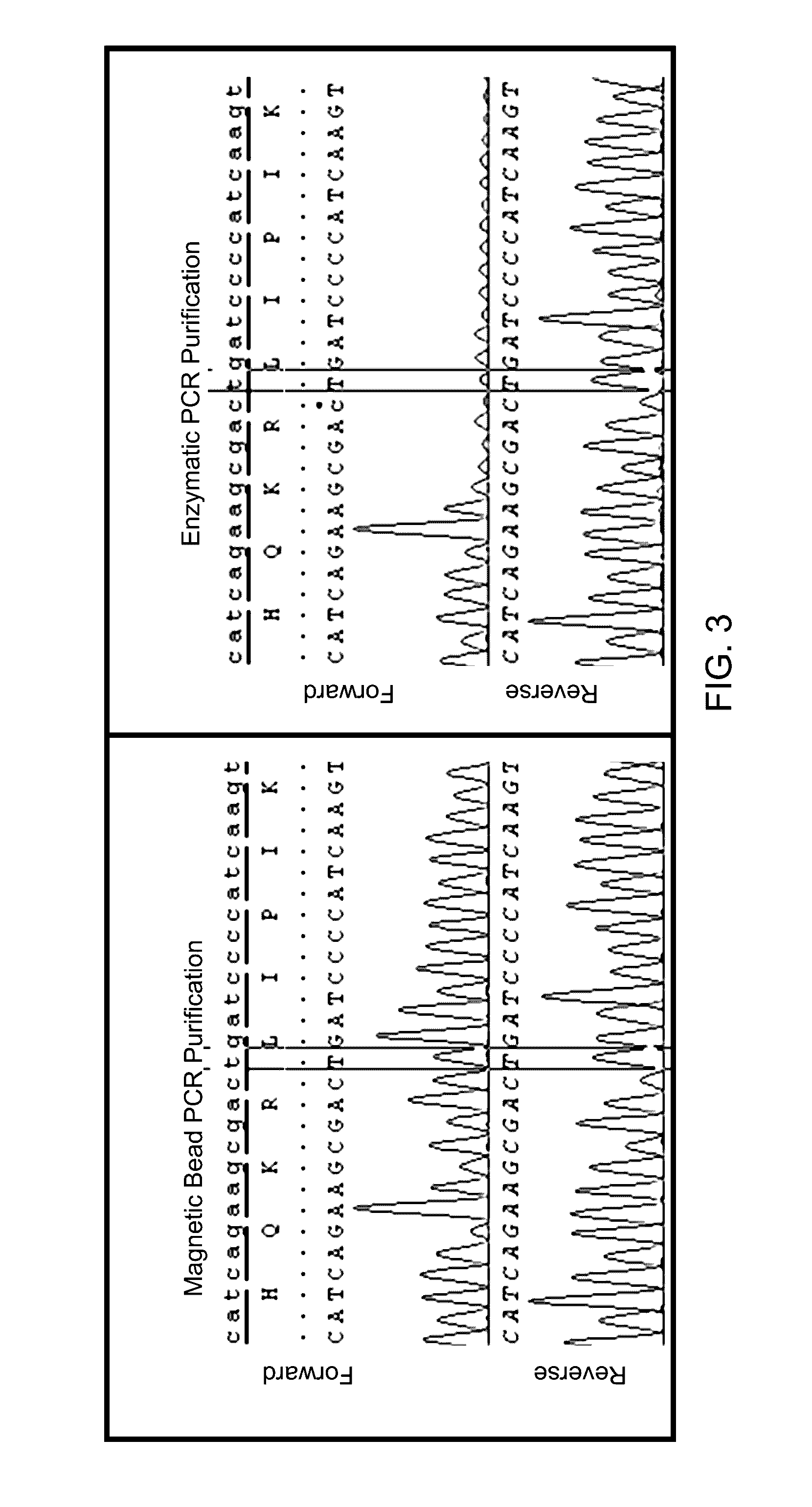Method for high sensitivity detection of MYD88 mutations
- Summary
- Abstract
- Description
- Claims
- Application Information
AI Technical Summary
Benefits of technology
Problems solved by technology
Method used
Image
Examples
example 1
Protocol for MYD88 Assay Using WTB-PCR Testing
[0030]DNA Extraction from FFPE Tissue, Peripheral Blood (PB), and Bone Marrow (BM) Aspirate is performed following the steps described below for the appropriate sample type. It should be noted that the procedures described may be specific to a particular manufacturer's / supplier's instructions. Variation to adapt these steps to kits and reagents from other sources will be readily apparent to those of skill in the art.
[0031]Tables 1 and 2 below provide reagents and primer sequences, respectively, used in this procedures.
TABLE 1ReagentVendorCatalog No.Description100% alcoholVWR89370-084Histology grade;91.5% Ethanol,5% Isopropyl alcohol,4.5% Methyl alcoholDNAse,RNAse-free,ultra-purewaterEthanolSigmaE7023200 proof, forAbsolutemolecular biologyFastStart TaqRoche12032937001With 10XDNAconcentrated PCRpolymerasereaction buffer, with(5 U / ul)20 mM MgCl2XyleneVWR89370-088Histology gradeBigDyeLife4337455With 5X SequencingTerminatorTechnologiesBufferv...
example 2
MYD88 Mutation Detection
[0067]Patients and Samples:
[0068]Patient material was submitted for MYD88 gene mutation status for various referral reasons. All work was performed with Institutional Review Board (IRB) approval. A total of 153 patient samples were submitted, including fresh bone marrow aspirate (BM), fresh peripheral blood (PB), and formalin-fixed, paraffin-embedded (FFPE) tissues. Routine Flow cytometry data was available on 9 / 37 retested positive patient samples (PPS) (see Table 4).
[0069]DNA Extraction:
[0070]Using the QIAcube automated DNA extraction machine and the DNA blood mini kit or FFPE tissue kit (Qiagen; Venlo, Netherlands), we extracted DNA according to manufacturer's instruction. Extracted DNA was then quantified using a Nanodrop 2000 (Thermo Fisher Scientific; Waltham, Mass., U.S.A.) instrument and adjusted to approximately 50-100 ng / uL with H2O.
[0071]DNA Sequencing:
[0072]153 patient samples were run using WTB-PCR. We randomly selected 37 of the 62 patient sampl...
PUM
 Login to view more
Login to view more Abstract
Description
Claims
Application Information
 Login to view more
Login to view more - R&D Engineer
- R&D Manager
- IP Professional
- Industry Leading Data Capabilities
- Powerful AI technology
- Patent DNA Extraction
Browse by: Latest US Patents, China's latest patents, Technical Efficacy Thesaurus, Application Domain, Technology Topic.
© 2024 PatSnap. All rights reserved.Legal|Privacy policy|Modern Slavery Act Transparency Statement|Sitemap



